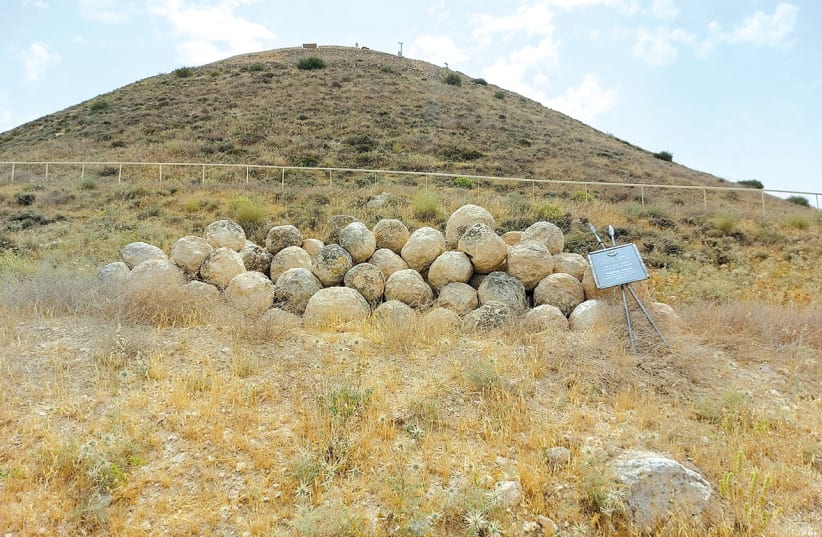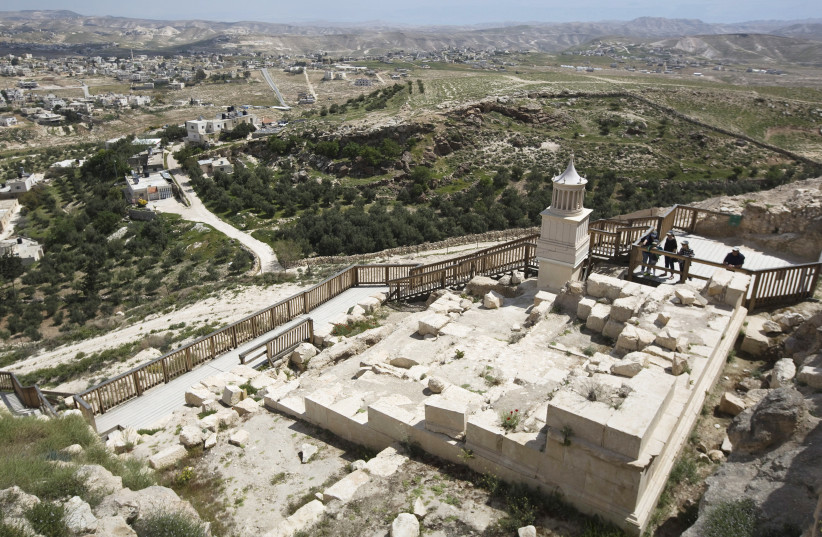In the words of a Hebrew song written by Yossi Gimzo after the Six Day War about the Western Wall, “There are human beings with a heart of stone, and there are stones with a human heart.” The lyrics were inspired by Rabbi Zvi Yehuda Kook, who wrote decades earlier, “There are two types of stones: Some are lifeless, and some have hearts.”
These powerful words resonate with the new issue of The Jerusalem Report. It began with an invitation to tour the revamped Tower of David Jerusalem Museum ahead of its festive opening on June 1. Then came an invitation for an exclusive interview with Brian Sherr from Florida, who is restoring the Tiferet Israel Synagogue in Jerusalem’s Old City built by his ancestors.
Finally, a friend’s son who recently received his driver’s license asked if he could drive me to Herodium (alternatively spelled Herodian), an archaeological park south of Jerusalem that is the site of a massive palace and fortress built more than 2,000 years ago by King Herod.
A trip to Herodium, a Jerusalem archaeological park
A 30-minute drive from Israel’s capital, Herodium Park is well worth a visit. At the entrance is a cluster of boulders at the foot of the hilltop, behind a sign that reads “Rolling stones from the time of the Jewish revolts against Rome.”
We saw a short English film on Herodium and ascended what was once a royal staircase to an impressive palatial complex – the largest in the Roman world at the time. The narcissistic but visionary monarch who, inter alia, built the Second Temple, named the splendid project after himself. We stopped to admire the panoramic view of the Judean Desert, with the Jewish community of Tekoa and the Palestinian village of Tuqu’ close by, and Bethlehem and Jerusalem in the distance.
Under his orders, Herod’s artisans and slaves built a palace-fortress with seven levels and four towers; an aqueduct system to supply water to gorgeous gardens and an enormous pool; a bathhouse with mosaic floors and frescoes; a racetrack and a semi-circular Roman theater that sat 300 people designed for entertaining the king’s guests; and an opulent two-story mausoleum.
The famous Hebrew University archaeologist Ehud Netzer reported in 2007 that he had discovered Herod’s tomb there. A limestone sarcophagus believed to be Herod’s, smashed by rebels during the Jewish-Roman War, is now on display at the Israel Museum in Jerusalem.
Sadly, Netzer – who was chief architect for the restoration of Jerusalem’s Jewish Quarter (1967-1975) and led excavations at Herodium for three decades – died in 2010 at 76 of injuries sustained from a fall in the theater.
Herodium Park, which is undergoing a significant upgrade, is located in what the Oslo Accords designated as Area C, under the jurisdiction of Israel’s Civil Administration, and is administered together with the Israel Nature and Parks Authority. Among other sights, visitors can view the remnants of a synagogue and and mikveh (ritual bath) built by Jewish rebels; tunnels dug out by the rebels during the Bar Kochba Revolt; and three churches with mosaic floors built by Christian monks.
In 2013, an exhibition dedicated to Herod’s legacy at the Israel Museum featured archaeological finds from 30 tons of material excavated at Herodium, triggering a sharp protest from the Palestinian Authority. Among the finds was a 2,000-year-old copper ring bearing the name of Pontius Pilate, the Roman official who ordered the crucifixion of Jesus.
Fifty years ago, the song “Then We Are Decided” from the 1973 musical Jesus Christ Superstar was filmed at Herodium, featuring the memorable lines, “Don’t you see that we could fall? If we are to last at all, we cannot be divided.”
It’s a Herodian lesson that should be etched in stone.

